Small Bathroom Design Ideas: Transform Your Small Space into a Stylish Retreat
Table of Contents
When it comes to small bathroom design ideas, creating a functional and beautiful space isn’t impossible. Whether you’re dealing with a tiny guest bathroom, a small guest bathroom, or a cramped master bathroom, the right design strategies can completely transform your small space into a stylish haven that combines spaciousness and luxury.
Small bathrooms present unique challenges, but they also offer great opportunities for creativity and innovation. With thoughtful planning, smart storage solutions, and strategic design choices, you can make the most of every square inch while creating a space that rivals larger bathrooms in both function and style.
Understanding Design Options for Different Bathroom Sizes
Improving Small Bathroom Designs
The foundation of a successful small bathroom design lies in understanding how to work with the existing space. For bathrooms under 40 square feet, every decision matters far more than for larger spaces.
Corner Arrangements work exceptionally well for small bathrooms. Consider placing your toilet in a corner to free up valuable floor space for other fixtures. Wall-mounted toilets create a sense of more space and are easier to clean.
Linear designs are ideal for narrow bathrooms. Arrange fixtures along one wall, with the shower or bathtub at the far end, followed by the sink, and then the toilet closest to the door. This creates a logical flow while maximizing available space.
Three-quarter bathrooms (shower, toilet, and sink without a bathtub) often provide the perfect solution for small spaces. If you must add a bathtub, consider a small bathtub or a shower-in-a-shower combination.
Optimizing Medium to Large Bathrooms
For bathrooms larger than 60 square feet, you have more flexibility to incorporate luxury features while maintaining the principles that make small bathroom design ideas so effective.
Wet bathrooms eliminate the need for shower doors or curtains, creating flow and visual continuity. This approach is particularly effective in medium-sized bathrooms where you want to enhance the feeling of spaciousness.
Floating vanities work in bathrooms of all sizes, but they are particularly effective at creating the illusion of more space. They also provide practical storage space underneath while maintaining sleek lines.
Smart Storage Solutions That Work
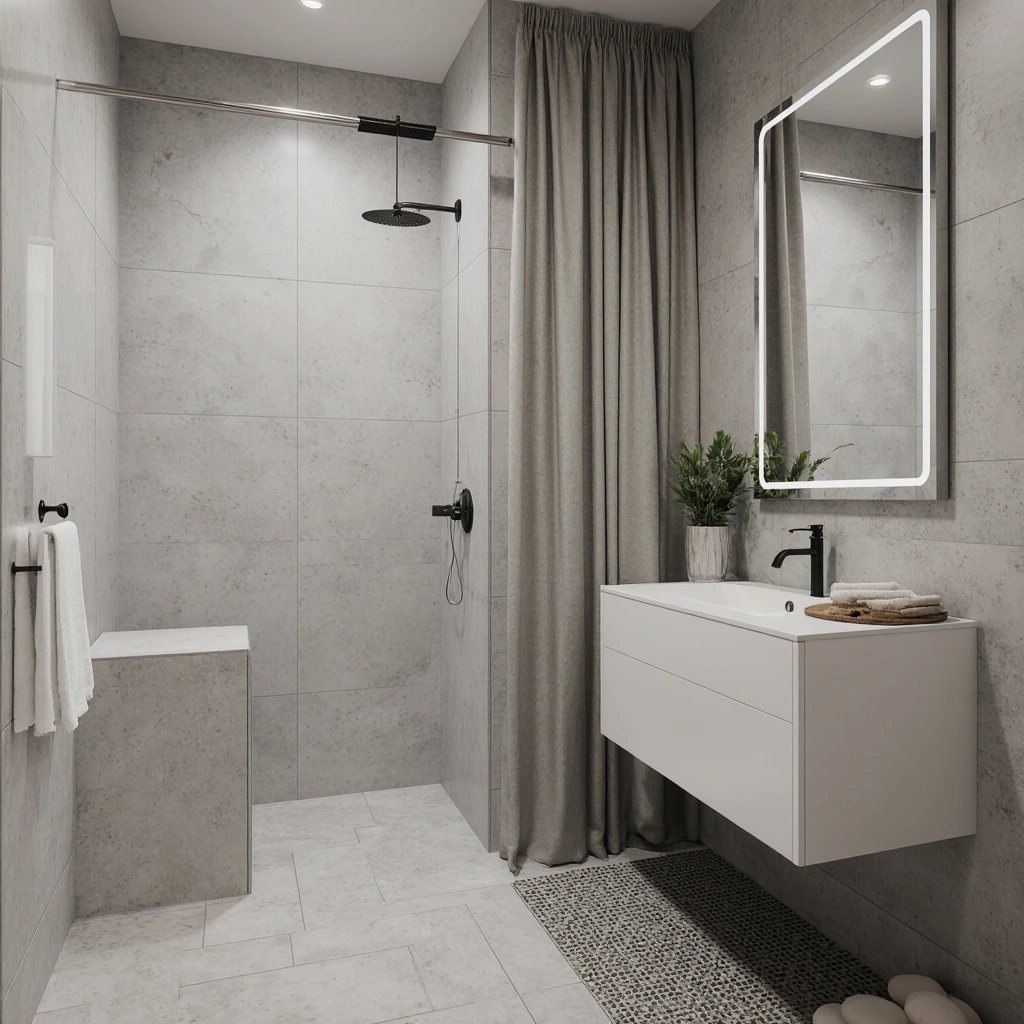
Vertical Storage Strategies
When floor space is limited, considering vertical storage becomes crucial. Tall, narrow cabinets provide ample storage without overwhelming the space. Look for floor-to-ceiling units to maximize storage potential.
Sunken medicine cabinets provide storage space without standing out. Modern versions come with built-in lighting and electrical outlets, combining multiple functions into one sleek design.
Floating shelves above the toilet or next to a vanity provide easy-access storage for everyday items. Choose shelves with hidden brackets for a more organized look.
Hidden Storage Innovations
Vanity cabinet drawers with dividers keep smaller items organized and easily accessible. Fully extendable sliding drawers ensure easy access to items stored at the back.
Niche storage built into shower walls provides convenient storage for bathroom essentials without requiring additional floor space. Waterproof LED strips beautifully illuminate these spaces.
Mirror cabinets serve two functions, providing essential storage while reflecting light to create a sense of spaciousness. Choose models with built-in lighting for maximum performance.
Durable and Stylish Materials and Finishes
Moisture-Resistant Materials
Porcelain tile remains the gold standard for bathroom floors and walls. It is non-porous, easy to clean, and available in countless designs that mimic natural materials like wood and stone.
Quartz countertops are superior in durability to natural stone with minimal maintenance. They are non-porous and stain-resistant, making them ideal for busy bathrooms.
Luxury vinyl plank (LVP) flooring offers the warmth and look of wood with complete water resistance. Modern versions of natural hardwood are almost indistinguishable.
Elegant Finish Combinations
Monochromatic color schemes create visual harmony that makes small spaces appear larger. Use different materials and finishes within the same color scheme to add depth and interest.
Mixed Metals add a touch of sophistication when chosen carefully. Pair warm brass fixtures with sleek chrome accents, or coordinate matte black metal hardware with brushed nickel faucets.
Natural Stone Accents add a natural beauty to small bathrooms. Use marble or granite sparingly as accent pieces rather than covering entire surfaces.
Lighting and Ventilation Solutions
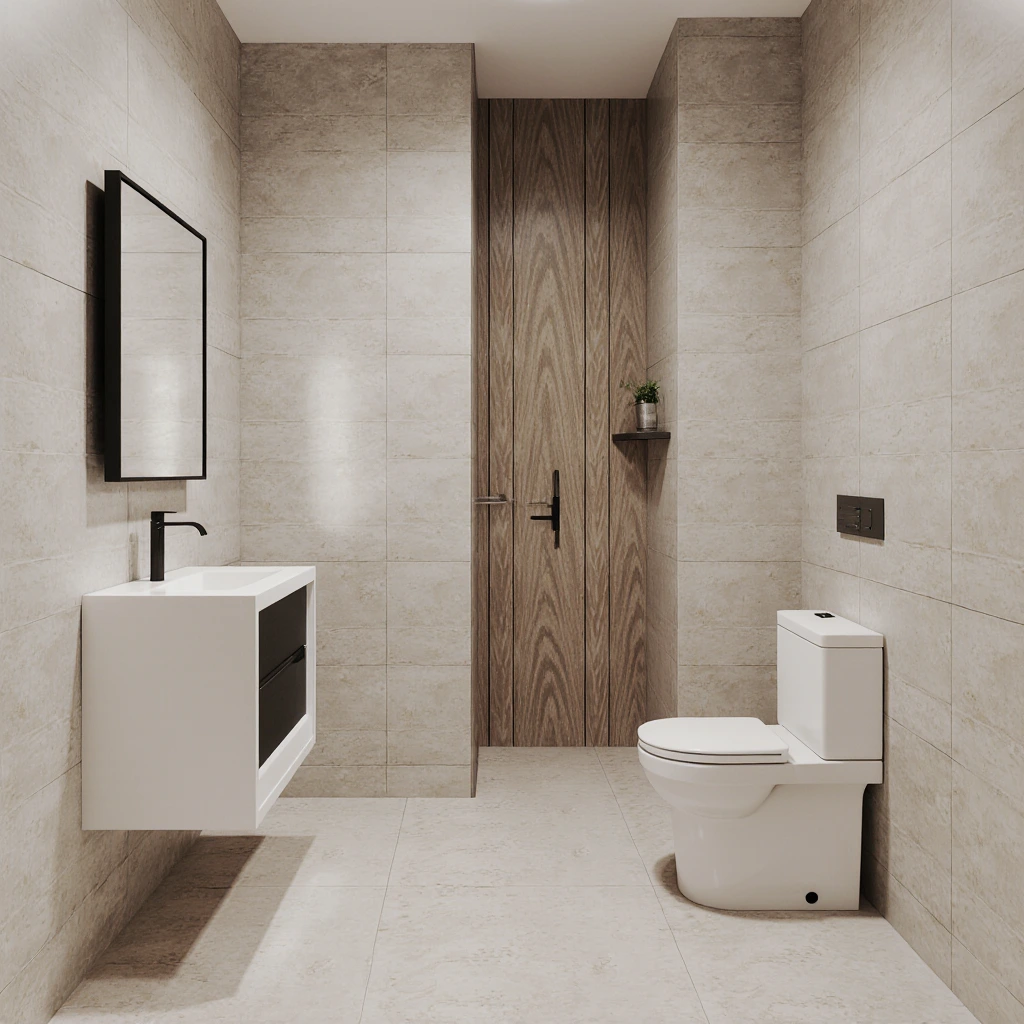
A Multi-Layered Lighting Approach
Ambient Lighting provides all-around illumination. Built-in ceiling lights with dimmer switches allow you to adjust brightness throughout the day.
Task Lighting around mirrors ensures clear visibility for grooming activities. LED strip lights behind mirrors provide even, shadow-free illumination.
Accent Lighting adds aesthetic appeal and visual appeal. It is recommended to use LED strips under hanging vanities or behind mirrors to create a soft glow.
Ventilation Best Practices
**Exhaust fans should be sized appropriately for your bathroom space. A general rule of thumb is one cubic foot per minute (CFM) per square foot of bathroom space.
Humidity Sensors automatically activate exhaust fans when humidity levels rise, preventing mold and mildew growth without requiring manual operation.
Natural Ventilation through windows provides fresh air and natural light. Insulated glass or window blinds maintain privacy while allowing light to filter through.
Common Bathroom Design Mistakes and Solutions
Size and Proportion Mistakes
Oversized fixtures can overwhelm small spaces. Choose pieces that are sized to maintain their function without dominating the room.
Inadequate spacing between fixtures creates cramped spaces. Maintain a minimum of 76 cm of clearance in front of toilets and 53 cm in front of sinks.
Incorrect door placement can limit design options. Consider using pocket or barn doors to save space, or rehang existing doors to open outwards.
Storage and Organization Mistakes
Inadequate storage planning leads to cluttered countertops and poor functionality. Plan for both open and closed storage options.
Ignoring vertical space wastes valuable storage opportunities. Use wall-mounted cabinets and shelving to maximize storage capacity.
Prioritizing form over function often results in beautiful but impractical spaces. Balance aesthetic appeal with everyday usability.
Color and Lighting Mistakes
Insufficient lighting makes small bathrooms appear cramped and uninviting. Use different types of lighting to achieve optimal performance and a comfortable atmosphere.
Dark colors can make small spaces appear even smaller. Light and neutral colors reflect light and create the illusion of more space.
Incorrect mirror placement wastes opportunities to reflect light and create visual depth. Position mirrors to reflect both natural and artificial light.
Advanced Design Techniques for Small Bathrooms
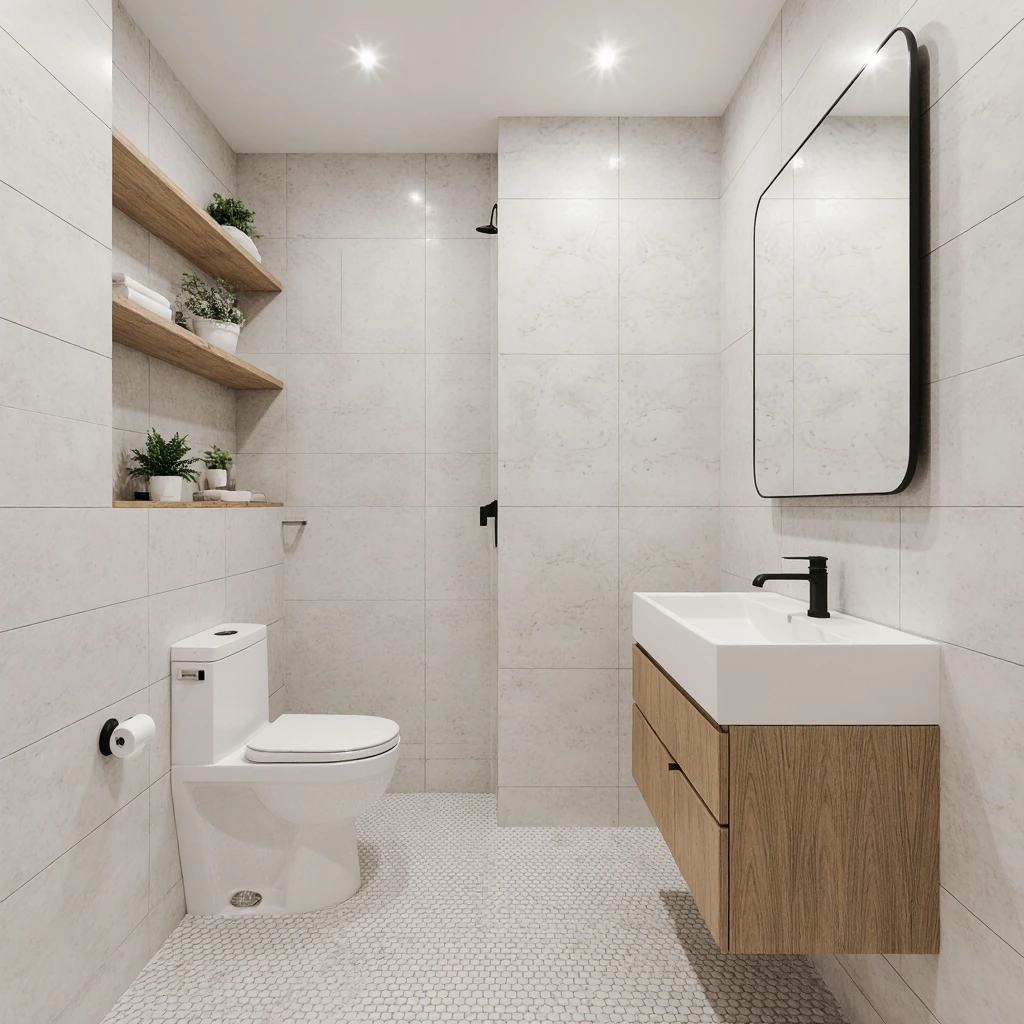
Visual Expansion Strategies
Continuous floors that extend throughout the space create visual flow. Avoid dividing the floor with different materials or patterns.
Glass shower enclosures maintain sight lines and prevent the feeling of a space being fragmented. Clear glass is preferred over polished or textured options.
Skylight curtains or shower doors draw the eye upward, suggesting higher ceilings and more vertical space.
Color Psychology in Small Spaces
Light and cool colors, such as calming blues and greens, create a sense of openness and calm. These colors are particularly suitable for small bathrooms.
Warm neutrals, such as cream, beige, and warm gray, create a warm and inviting atmosphere without overwhelming small spaces.
Strategic accent colors add a distinct personal touch without overwhelming the space. Use bold colors sparingly in accessories or accent walls.
Integrating Technology into Modern Bathrooms
Smart Storage Solutions
Bluetooth-enabled mirrors combine traditional functionality with modern technology, equipped with built-in speakers and smart connectivity.
Motion-activated lighting provides comfort and energy efficiency, automatically illuminating the space when needed.
Smart extractor fans monitor humidity levels and air quality, automatically adjusting ventilation to maintain optimal conditions.
Water-Saving Technologies
Low-flow fixtures reduce water consumption without sacrificing performance. Their modern designs offer excellent functionality while conserving resources.
Tankless water heaters save space and provide unlimited hot water, making them ideal for small bathroom renovations.
Smart leak detectors provide early warning of water damage, protecting your investment and avoiding costly repairs.
Budget-Friendly Design Ideas
Easy DIY Updates
Paint Changes make the most impact for the least cost. Choose high-quality bathroom paint designed to resist moisture and mold.
Appliance Updates can update existing fixtures without requiring a complete replacement. Choose finishes that complement your overall design.
Accessory Refreshments with new towels, shower curtains, and decorative items can completely transform the look of a room.
Strategic Luxury Spaces
High-quality fixtures, such as faucets and shower heads, are worth the investment due to their durability and performance. These pieces are used daily and should be built to last.
Professional installation of complex items, such as electrical and plumbing, ensures safety and compliance with specifications.
Custom storage solutions improve space efficiency and provide long-term value through improved organization and functionality.
Conclusion: Your Small Bathroom Transformation Journey
Implementing effective small bathroom design ideas requires careful planning, creative thinking, and attention to detail. By focusing on smart layouts, strategic storage, appropriate materials, and thoughtful lighting, you can create a beautiful and functional space no matter the size.
Remember, successful bathroom design balances aesthetic appeal with practicality. Every choice, from fixture selection to color schemes, should consider both form and function. By following the strategies outlined in this guide, you’ll be fully prepared to transform your small bathroom into a stylish haven that meets all your needs.
Ready for a bathroom makeover? Share your current bathroom challenges in the comments below, and don’t forget to sign up for our newsletter for more design inspiration and practical tips delivered straight to your inbox!
Best Amazon Picks :
FAQs
Q: What is the minimum size for a practical small bathroom?
A: A practical small bathroom can be as small as 18 square feet (3 x 6 feet), although 24-30 square feet offers a more comfortable space. The secret lies in thoughtful placement of fixtures and smart storage solutions.
Q: How can I make my small bathroom appear larger without renovating?
A: Use light colors, add thoughtful mirrors, improve lighting, clean countertops, and choose a wide tile pattern. These changes create visual spaciousness without requiring structural modifications.
Q: What is the best flooring option for small bathrooms?
A: Large-format porcelain tiles (12 x 24 inches or larger) minimize grout lines and make spaces appear more spacious. Luxury vinyl planks are another excellent option, as they are waterproof and comfortable underfoot.
Q: Should I choose a shower or a bathtub for my small bathroom?
A: For bathrooms under 40 square feet, a shower typically offers more functionality and creates a sense of spaciousness. If you need a bathtub, consider a small bathtub or a bathtub with a shower.
Q: What is a reasonable budget for a small bathroom remodel?
A: Small bathroom remodels typically cost between $3,000 and $15,000, depending on the scope of the job. Focus your budget on high-quality fixtures, professional plumbing and electrical installation, and moisture-resistant materials.
Q: What lighting is best for small bathrooms?
A: Layer lighting using recessed ceiling lights for general lighting, LED strips around mirrors for task lighting, and consider accent lighting under floating bathtubs. Ensure adequate ventilation to prevent moisture buildup around electrical fixtures.
Q: How do I prevent mold and mildew in a small bathroom?
A: Install an appropriately sized exhaust fan, ensure good ventilation, use moisture-resistant materials, maintain a regular cleaning routine, and address any leaks immediately. Good airflow is crucial in small spaces.
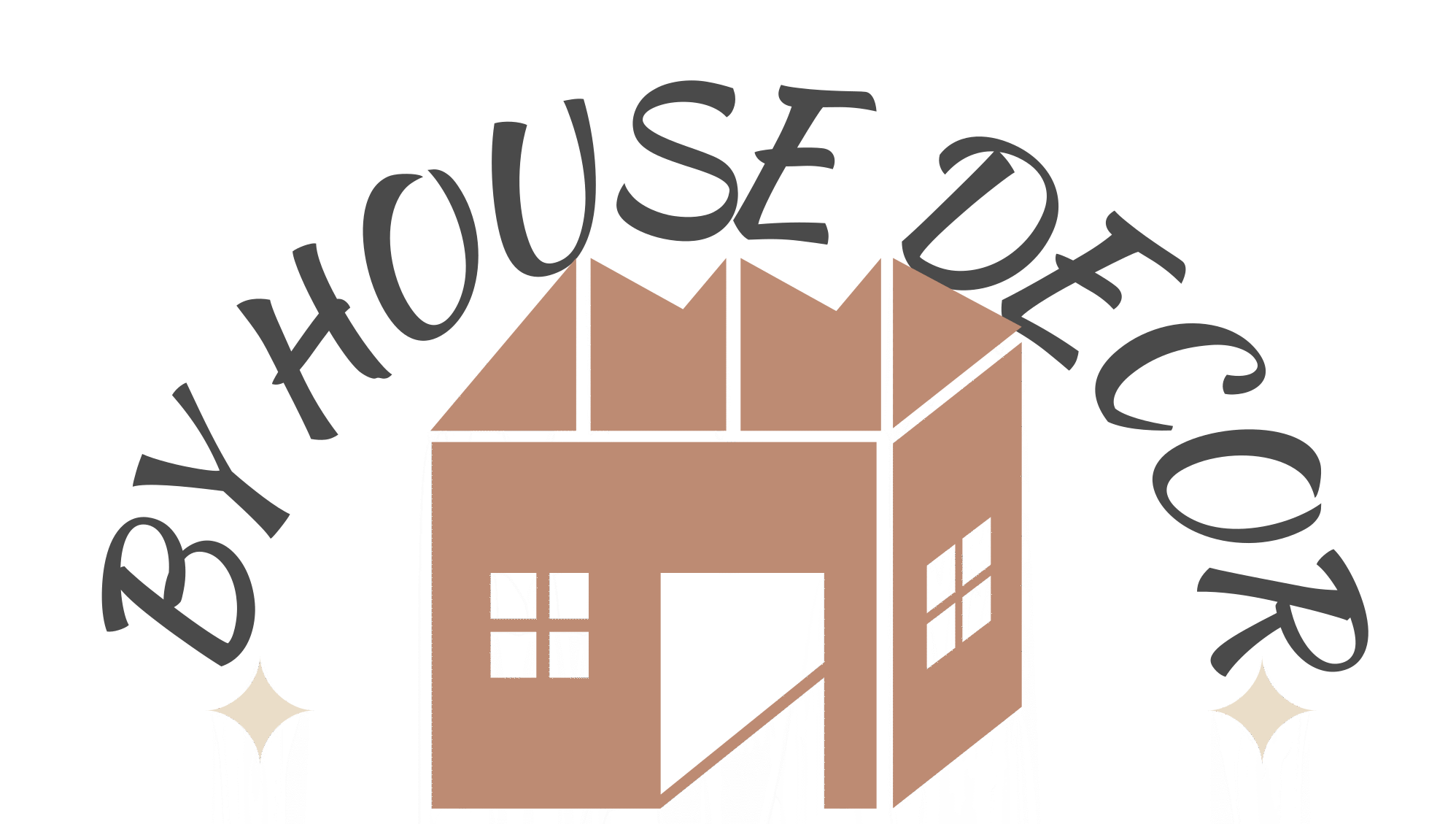
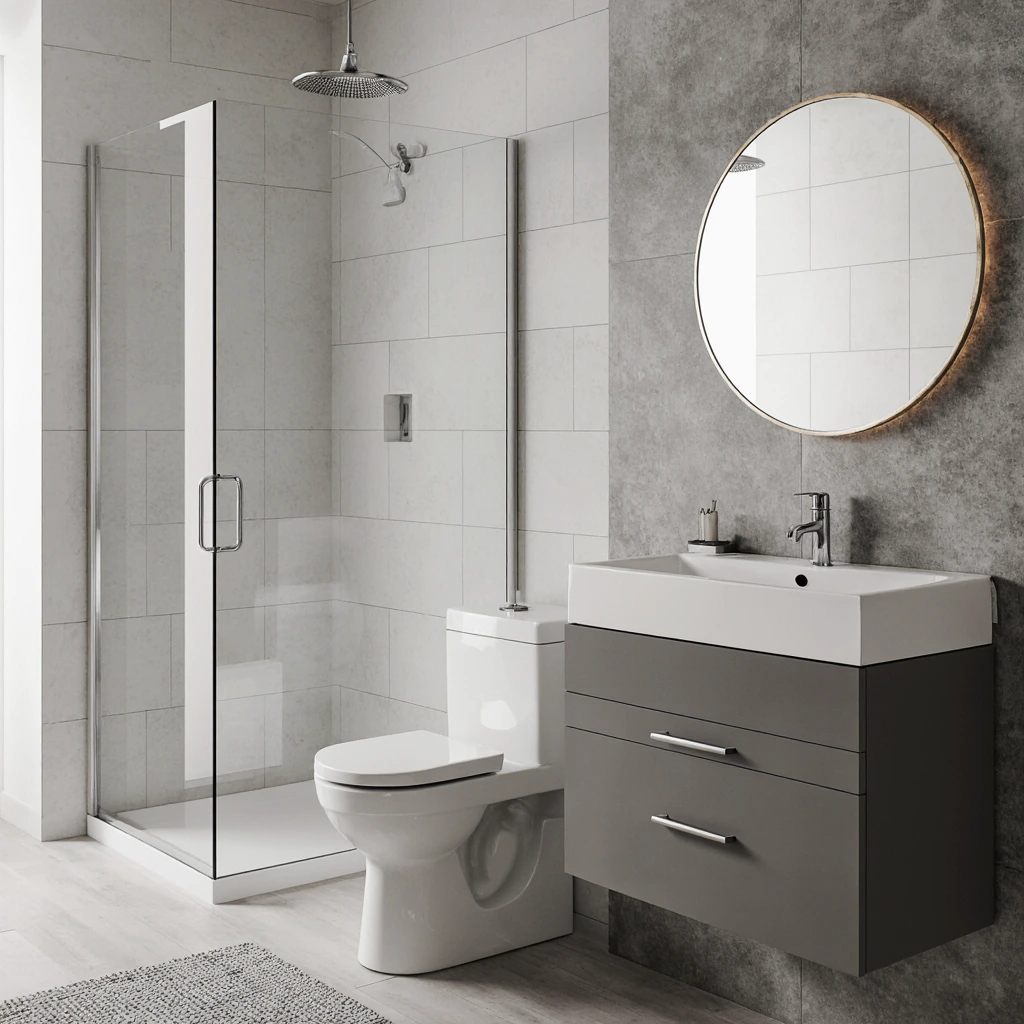
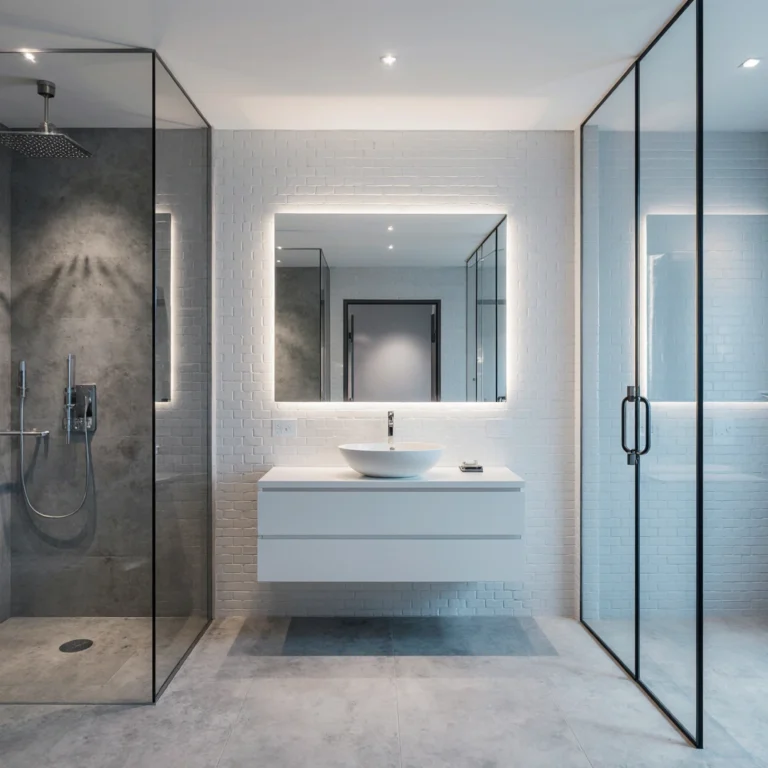

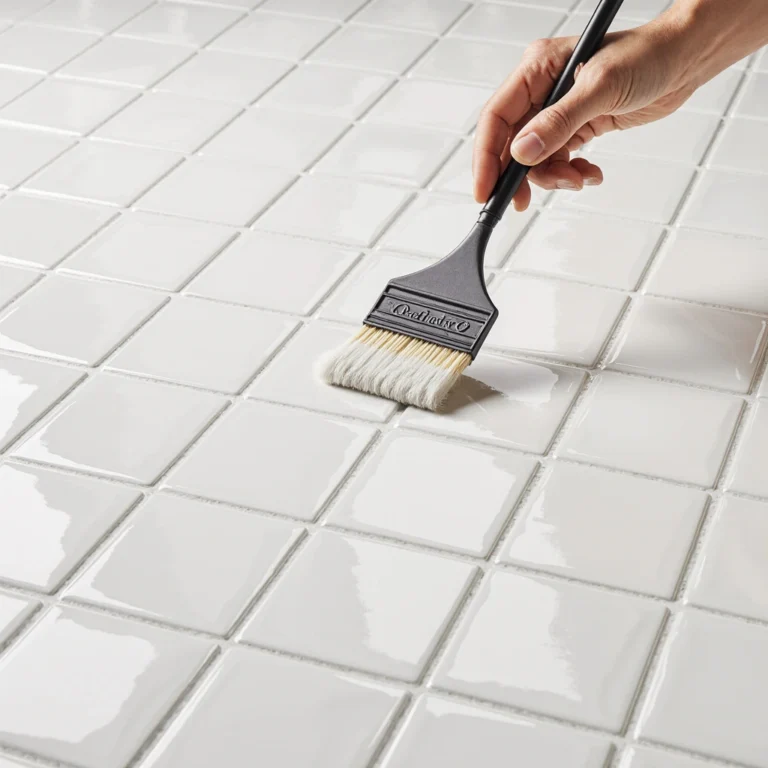
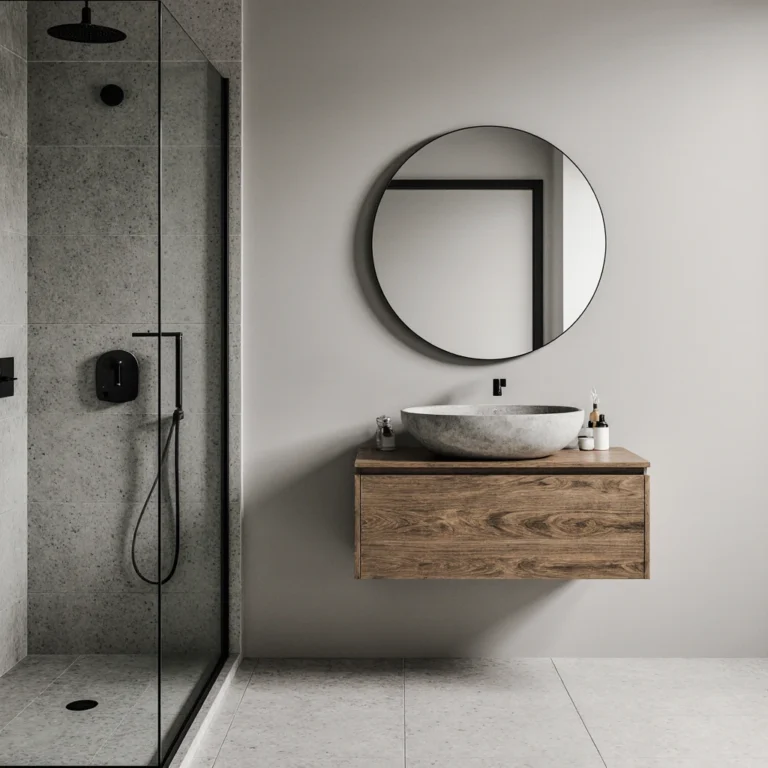
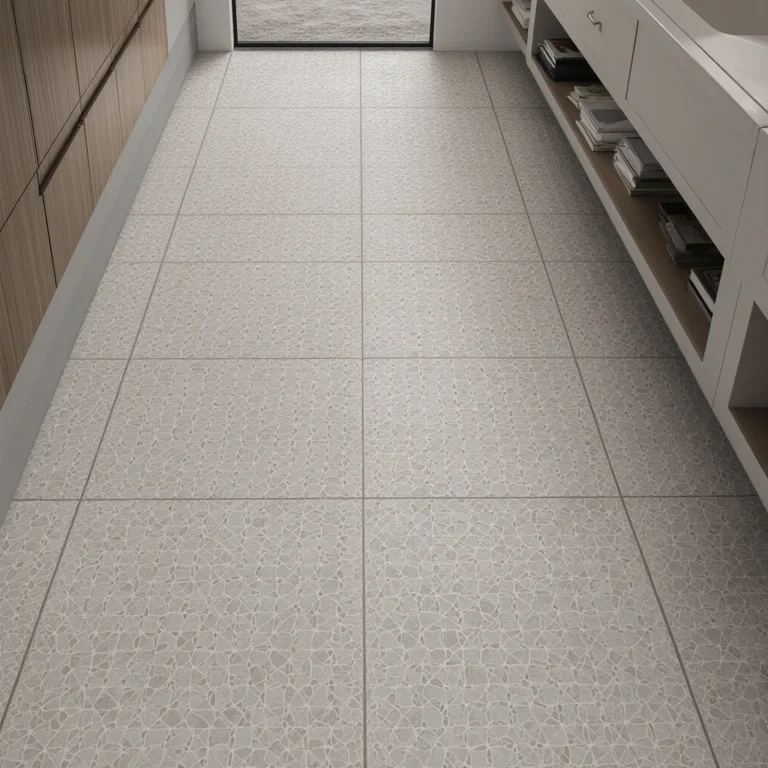
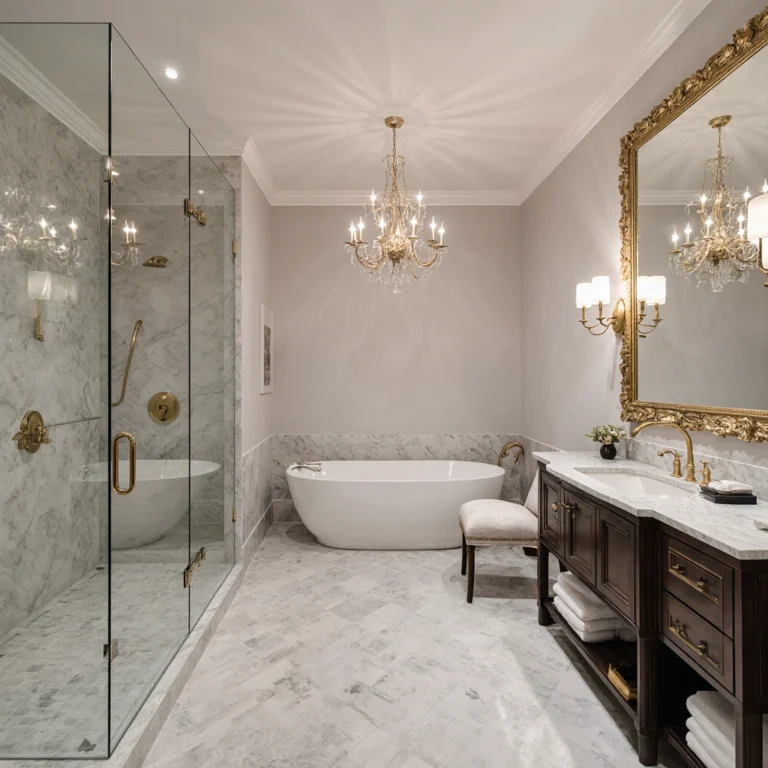
One Comment
Comments are closed.